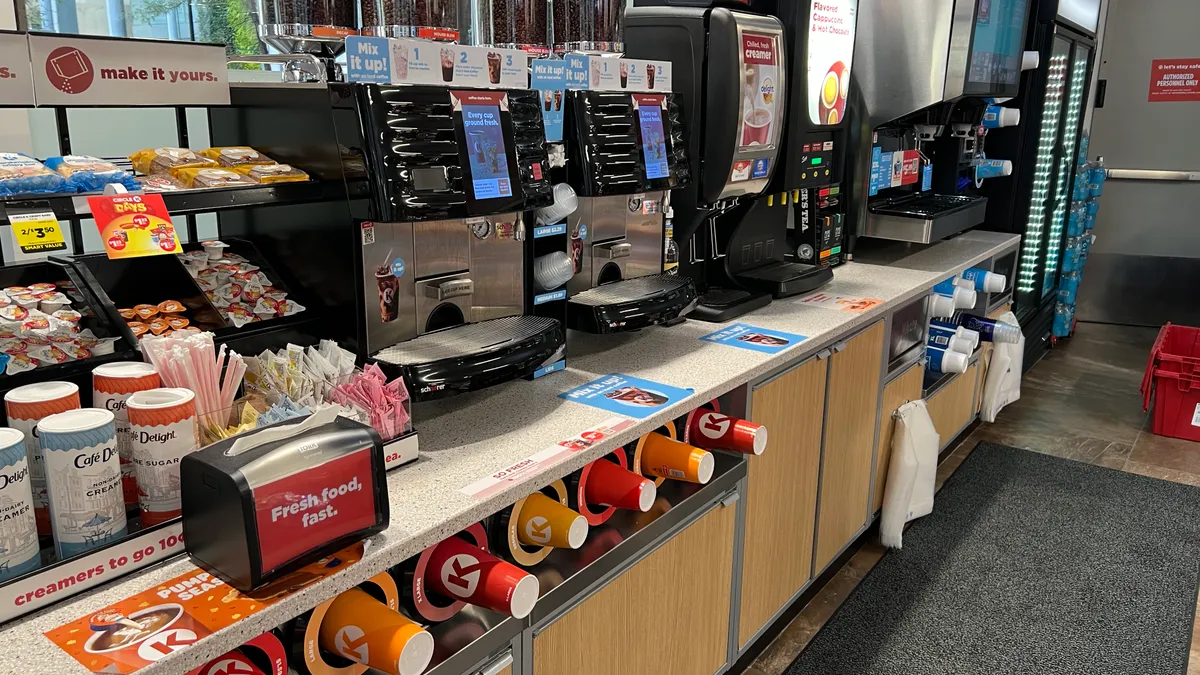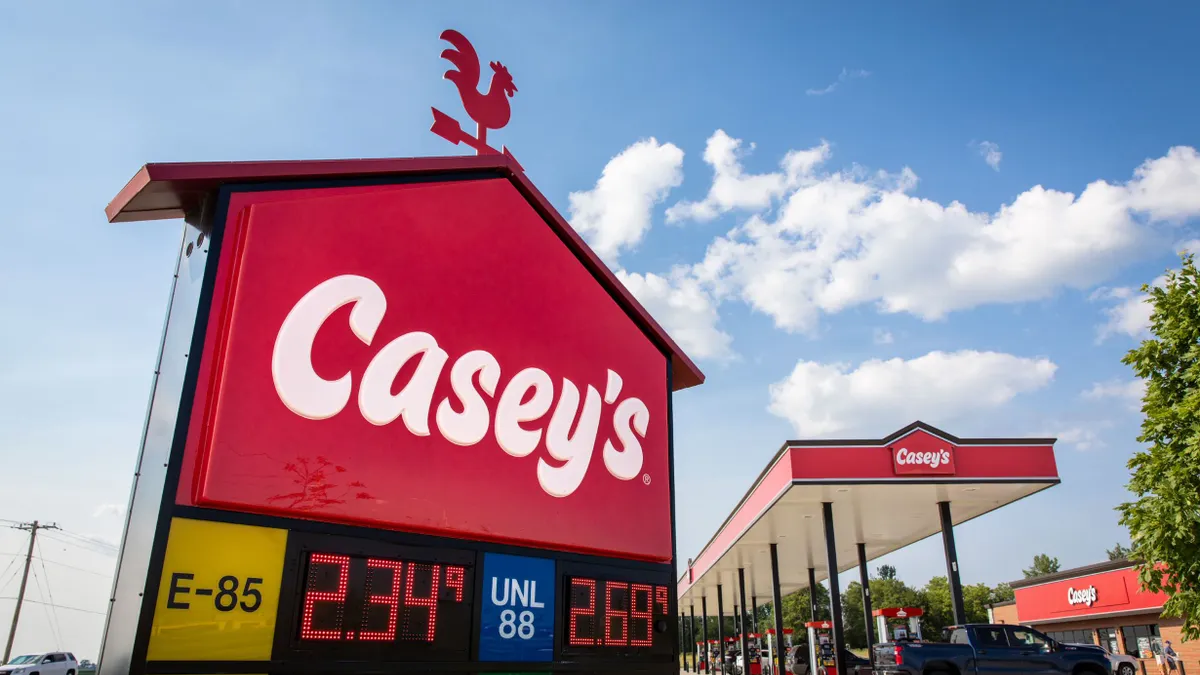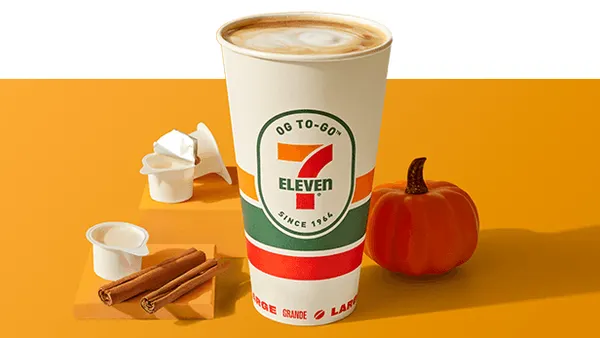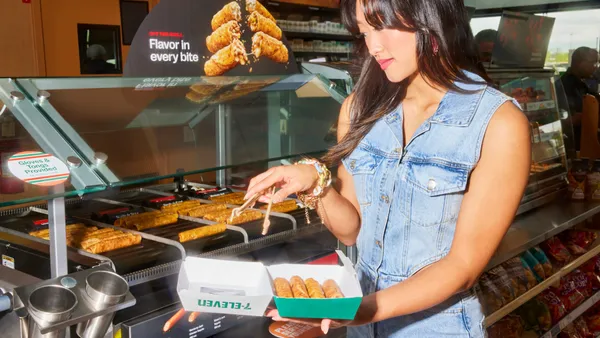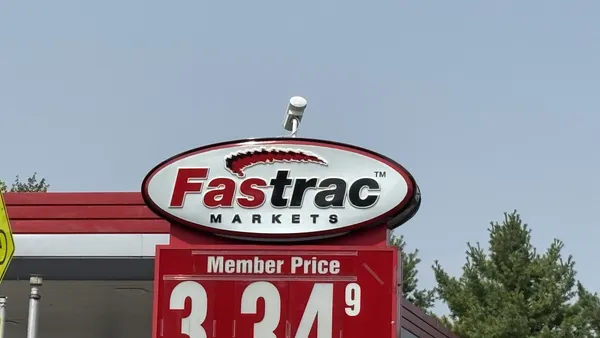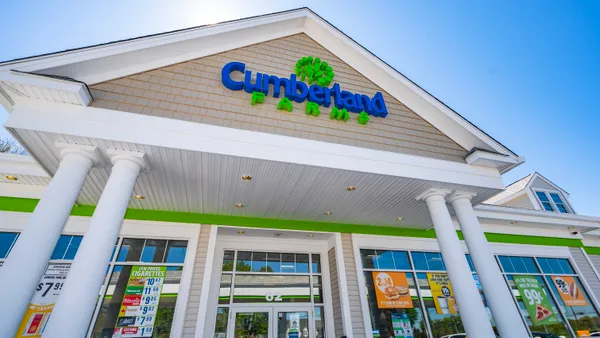LAS VEGAS — Chris Rapanick didn’t seem too surprised when he asked a couple hundred people in a ballroom to raise their hands to a straightforward question and barely got a response.
“How many people think their cold dispensed beverages are [performing] better [now] than they were in 2019?” Rapanick, director of business development for the National Association of Convenience Stores, asked the room during the NACS Show in Las Vegas.
Only one person raised their hand.
Once a powerful category in c-stores, dispensed beverages have fallen since the pandemic took its toll on the industry. In 2019, cold dispensed beverages accounted for 11.4% of inside sales for U.S. c-stores, according to NACS. That dropped to 6.9% in 2020.
“Obviously the [dispensed beverage] business fell off in 2020,” he said. “Consumers were wary. Who wants to go to the dispenser when you don’t know who [touched it] before? Why would you take a chance?”
Although inside sales for the category have since risen to 8.0% and 8.1% in 2021 and 2022 respectively, getting back to 2019 numbers is ambitious, Rapanick said.
“There is some movement — things are getting better,” he said. “Getting back to 2019 would be a lofty goal, but a good goal to have.”
So how can c-store brands reach that goal? Maverik and Circle K shared their strategies at the show for revamping their dispensed beverage programs. And those strategies seem to be working.
The Mixology report
Maverik views quick-service restaurant brands like Dunkin’, Starbucks and Dutch Bros as competition for its beverage dollars.
“We can offer similar products for a better price,” said Ryan Ratcliffe, dispensed beverage category manager for Maverik. “We strive to mimic what they do the best so we can bring their customers into our stores.”
Beyond competing with the big QSRs, Maverik also noticed soda-shop chains in its greater Utah region taking consumers’ beverage dollars. These stores offer “fun” combinations of beverages, such as Dr. Pepper with coconut, that consumers seem to enjoy — and pay a premium for.
This sparked an idea at Maverik: Why not let consumers make these combinations at its stores for a cheaper price?
“People will line up around the block and wait 30 minutes for Dr Pepper with coconut syrup in it and pay $4 for it,” Ratcliffe said. “I’m like, ‘No, there’s a Maverik here and you can get that for $1.50.’”
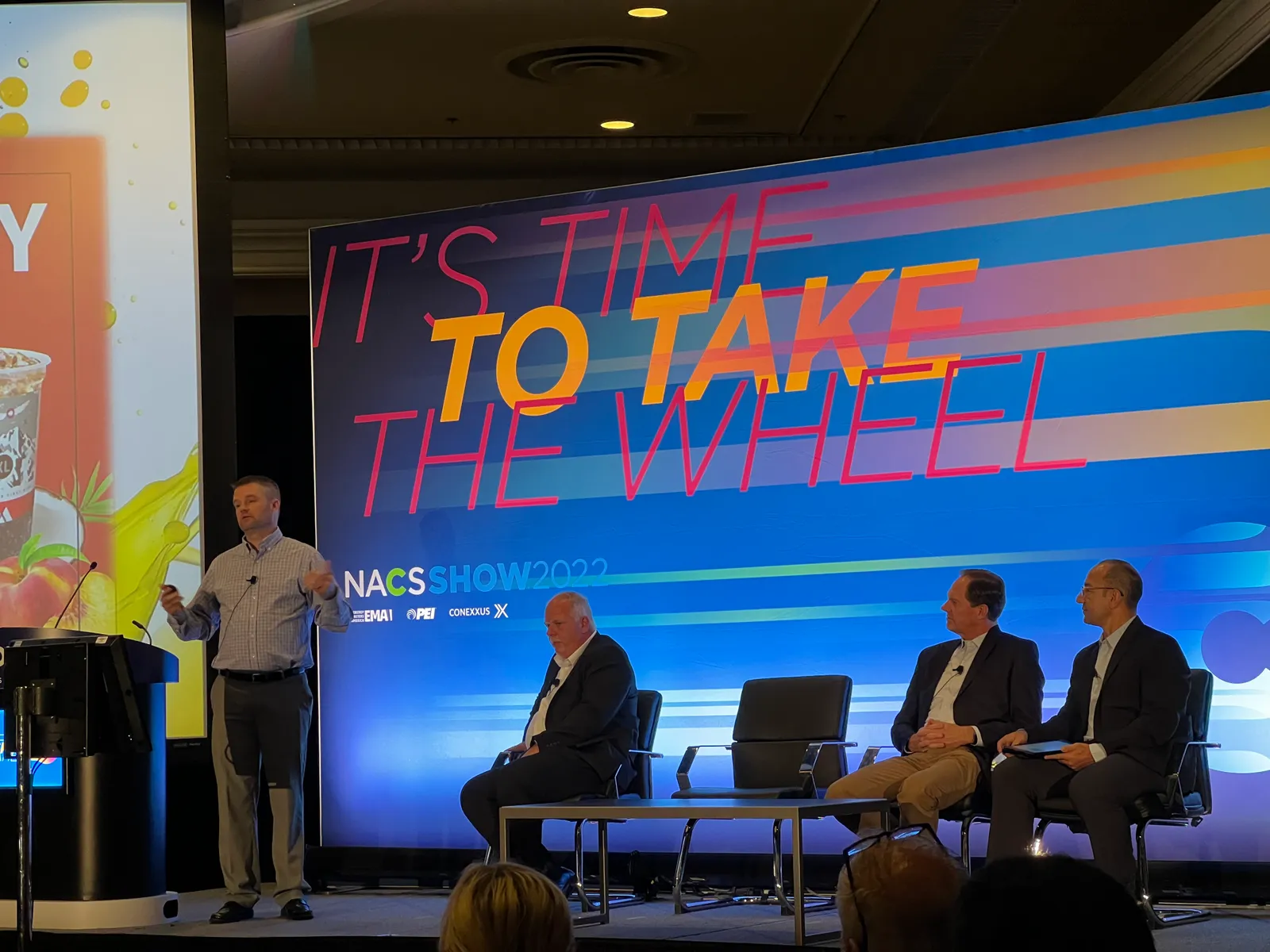
Through its Mixology beverage program, Maverik’s customers can add various flavor additions — such as coconut or pineapple syrup, sweet cream or fresh-squeezed limes — to existing dispensed fountain beverages. Maverik has its menu of options posted at its beverage fountains, while its marketing team gets creative with the program on social media, especially TikTok.
“[We’re] trying to get the message out that people can go to Maverik and make their same drink as at the soda shop,” Ratcliffe said.
Purple Thunder
Circle K felt good about its dispensed beverage program for a while, but knew it needed to mix things up.
“Over time, if we don’t provide something exciting, [the dispensed beverage program] becomes wallpaper,” said David Hall, VP of global foodservice for Circle K.
With that in mind, Circle K made three goals for its beverage program: drive excitement, engage customers and improve the experience so customers come back again.
Through a partnership with Pepsi earlier this summer, Circle K launched Purple Thunder — its take on purple Mtn Dew. Not only did Circle K launch the purple beverage in all its stores, but it created a “360-degree launch surrounding the customer,” Hall said. This included billboards, in-store displays and offering Purple Thunder in fountains, bottles and cans.
“Customers got excited about us bringing them something new and different,” Hall said.

Circle K also launched its Sip & Save beverage subscription program this summer, which lets members have a beverage a day at Circle K stores for $5.99 a month. This also resonated among consumers, Hall said.
“When times were tough with inflation, we came and provided [consumers] a value program,” Hall said. “We’re continuing to leverage, launch and grow this program.”
Lastly, Circle K needed to improve its beverage experience. And that came down to refurbishing the area where the fountains are in its stores.
“Having an environment where customers feel confident in coming in is really important,” he said. “We look at [the dispensed beverage area] and say, ‘Do I want to bring my own family into the store?’ If the answer is ‘No,’ we adjust.”



